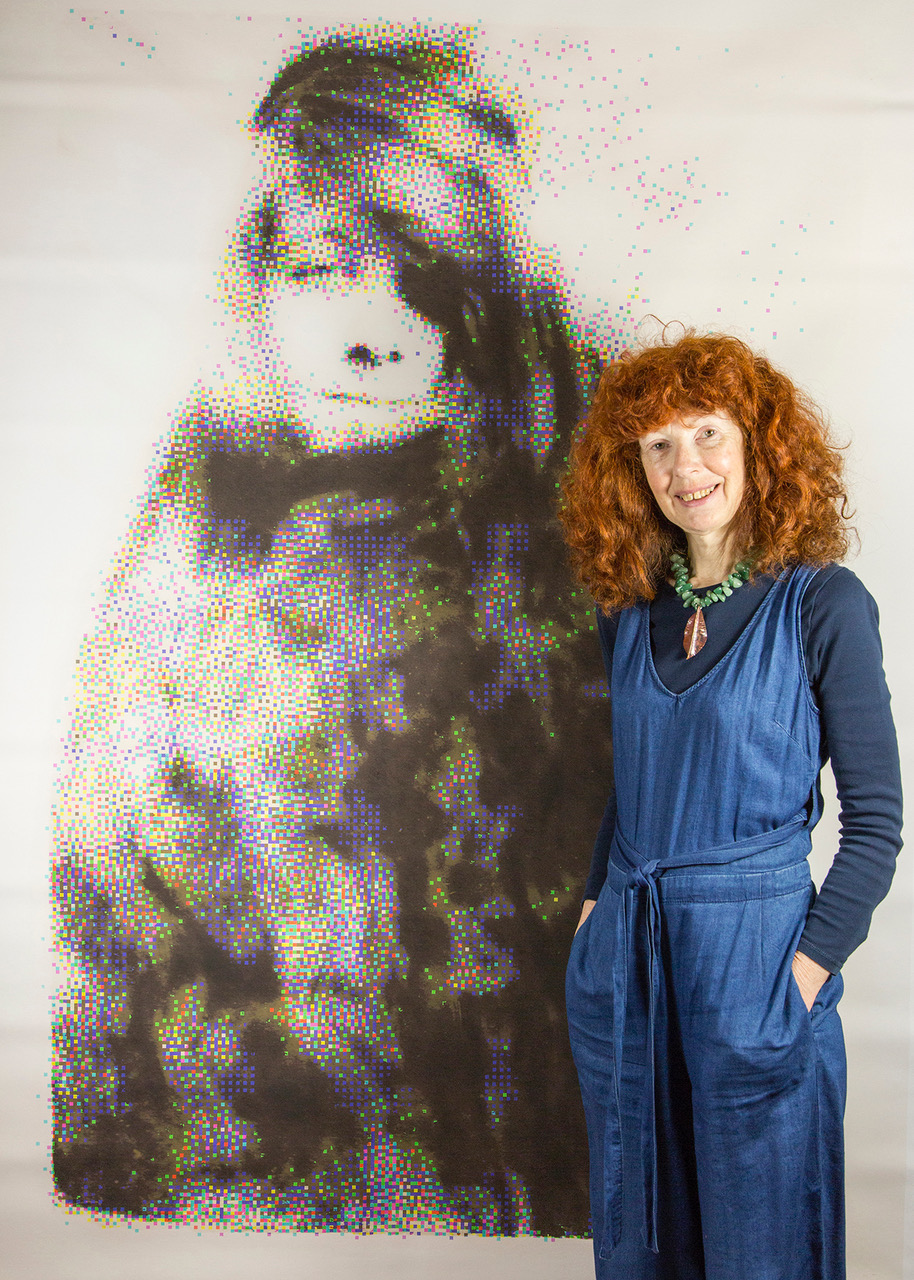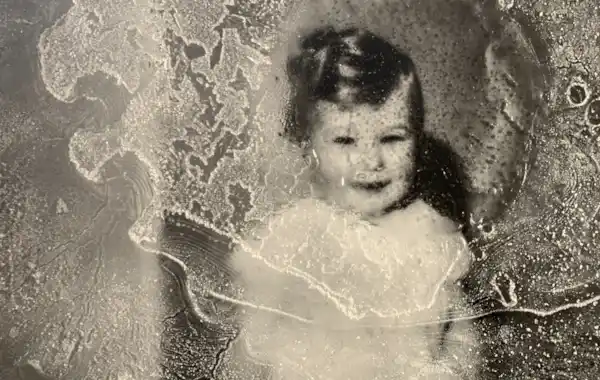Photographer Julia Cameron inherited a box of family photos and letters. Instead of leaving it to gather dust in the attic – she transformed it into an innovative work of art.
By Liz Hollis
It’s been the year for a good clear out. With more time at home, many of us have finally found time to turn out the long-forgotten memorabilia lurking in a dusty cupboard or the loft.
Unfortunately, encouraged by the latest trend towards minimalism and decluttering, many old family albums and documents may now be discarded or not even passed down to the next generation.
So how can we keep organised, yet still find a useful and interesting way to display or store our precious family keepsakes? For artist Julia Cameron the answer was to turn her family history archive into an innovative series of artwork called Kinswomen.
“Most people have a dusty box in a cupboard or attic with albums or collections of family photographs and letters,’ says Julia, an artist and photographer based in Norwich. ‘Mine were acquired on the death of my father at the age of 93.
‘On the one hand we want to be streamlined, but on the other hand family items like those I inherited from my father are precious, so I wanted to do something meaningful with them,’ she adds
 Clearing out her father’s room after his death in 2017, Julia found old cameras, a container of random seashells and an old box of ‘big value Christmas cards, 20 for 30p’ with an illustration of a partridge in a pear tree on the lid.
Clearing out her father’s room after his death in 2017, Julia found old cameras, a container of random seashells and an old box of ‘big value Christmas cards, 20 for 30p’ with an illustration of a partridge in a pear tree on the lid.
“A lot of what was left in his room was destined for the skip. Luckily, however, I opened up this box just to check what was inside and revealed an incredible archive of my family history that I had never seen before.
‘It contained material about my mother, grandmother and great grandmother I didn’t even know existed,” she says.
The box contained snippets cut from letters exchanged by her maternal grandmother and great grandmother. These recounted amusing anecdotes about Julia’s mother, then just three.
There were also photographs, old school reports, newspaper cuttings, drawings and cards commemorating births, marriages and deaths.

Julia also found a huge trove of family photos spanning four generations. Most were studio and posed photographs from Victorian times.
“Beneath the Christmas card box in a large brown envelope I found photographs unknown to me including official portraits of my mother’s confirmation.”
“I was also surprised to find a letter I had drafted, aged five. However, my parents had high standards for presentation and had deemed it not good enough to send. I recall the tears of having to do it again ‘properly this time”.
“These were items that my mother had kept and were unknown to me until I literally lifted the lid on them,” says Julia.
Creating art from memorabilia
The family history discovery formed the theme for Julia’s new series of art work called Kinswomen: Camerons and Kings Served with Baked Starlings where she has reworked and reimagined the images.
“Many of us inherit this kind of box and I began to question their importance and what should be done with them,” says Julia.
“Feeling somewhat bereft after the death of my father, I also felt the need to make some sort of ‘contact’ with my predecessors using photography as my medium because I am the last generation to have had physical photos taken of them.
Julia began reimagining and preserving the photographs in order to share them anew. ‘I have created a synthesis of the old physical photographs, combining them and changing them to make new versions that are imbued with memory and emotion.
“Most of the people in the photographs are dead and the past cannot be retrieved. However, while they are a source of sorrow, to my mind they can also be a source of comfort by making the images differently and bringing new life and connections to my past family” says Julia.
“Everything is digital now and there will be no more boxes to be passed down to future generations. It has stopped at me.
“The exhibition is designed to challenge us to reconsider the importance of family photographs, ancestors and mementos in our culture and personal history and what family means to our identity,’ says Julia
It’s a theme that proved to be more pertinent post Covid-19. ‘Many of us have reconnected with friends and family during lockdown, rediscovering and sharing old photos and memories via Zoom and other digital spaces. These have become the new family meeting rooms bringing reassurance or otherwise and news from afar and near.
‘Our loved ones have been reduced to two-dimensions or words on a screen and untouchable. Our ancestors would have been amazed at our communications network.’
Keeping hold of old photographs
 Julia’s exhibition also encourages visitors to consider the history of photography as it moves from physical images to digital images. The latter are more problematic to pass down, put in albums or share with future generations of a family.
Julia’s exhibition also encourages visitors to consider the history of photography as it moves from physical images to digital images. The latter are more problematic to pass down, put in albums or share with future generations of a family.
Julia began reimagining and preserving her family photographs in order to share them anew. ‘I have created a synthesis of the old physical photographs, combining them and changing them to make new versions that are imbued with memory and emotion.
“Most of the people in the photographs are dead and the past cannot be retrieved. However, while they are a source of sorrow, to my mind they can also be a source of comfort by making the images differently and bringing new life and connections to my past family” says Julia.
‘Many people want to declutter their home. Sadly, this is likely to mean that many old family photographs like I discovered, just won’t be preserved and passed on to future generations. We may lose lots of important family history documents,’ says Julia.
Historian Sarah Gristwood, speaking on Radio 4 programme Four Thought, Tidying Up (available on BBC iplayer) is worried that the trend for tidying will make history harder to discover.
She has questioned how digital images will be preserved into the future indefinitely, as old photos have, when most of us can’t even access the computer files we made a decade ago. She fears historians may not have the same research material in the future.
‘Paper and artefacts may take up a lot of space and collect a lot of dust but at least it’s been proven that they stick around for centuries. What the historian needs is the unsorted barrel of papers, the stuff that should or has been thrown away, stuff in cupboards,’ she says.
Julia Cameron hopes Kinswomen will prompt debate about the importance of preserving precious items of family history – and what we could or should do with them.
‘Although in some sense autobiographical, most people have some old family photographs with which they have their own connections,’ she says. ‘It is my hope that the exhibition will prompt visitors to get out, examine and value their own pictures, letters and documents as a way of ensuring a continuity of their own family history.’
Kinswomen is on display at St Margaret’s Church of Art, St Benedict’s Street, Norwich NR2 4AQ until 4 September 2020. A digital version of the exhibition will later be available through Julia’s website.








